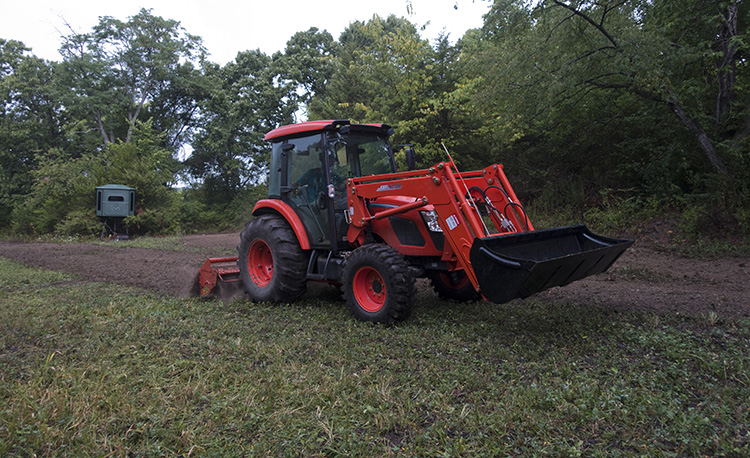ADAM from Missouri asks,
Hey Bill, wanted to get your input on your favorite method of planting brassicas. I plan on having three or so smaller 1/2 acre food plots in big n beasty scattered along the edges of CRP fields. This will be my first fall hunting the farm so there have not been any previous established food plots. I sprayed the three areas with glyphosate back in May and plan to spray them again this week. Hopefully I will be getting the soil sample results back within the next week as well. My question is which method would you go about planting these new plots with a thick layer of dead thatch on the ground? I’ve seen in the past you have burned the thatch off, worked the ground, and then planted. I have also heard of people broadcasting directly into the dead thatch and pray for rain. Luckily I have access through a local farmer for a tractor, disk, harrow, and cultipacker. There is also an option for renting a no-till drill through the local USDA office. Thanks for the input.
Bill responds,
Topic: Best Way to Plant Brassicas:

Tilling the ground after spreading the fertilizer and prior to broadcasting the brassica seed is the best way to prepare the seedbed. Ideally, you would cultipack after broadcasting the seed, but that is not as critical as creating a seedbed where the fertilizer is buried and available and the ground surface will encourage good seed to soil contact.
Adam,
Sounds like fun. You are in a good position. The very best way to plant brassicas is to kill the weeds, broadcast fertilizer, till the soil, broadcast the seed and then cultipack the seed in. If you can do all this, your stand will be superior to any other method. However, most people don’t have the time or equipment to “do it right” and lots of shortcuts abound. Again, every shortcut will reduce the quality of the stand for one of three reasons: weed control, fertilizer availability and seed germination. Y0u will compromise at least one (if not all three) if you cut a lot of corners.
Now, if I had that plot and didn’t want to do all that work or didn’t have access to the equipment, I would probably not broadcast into the thatch. That can work, but the seed has to find its way down through that stuff to get to the ground and that might not happen if the thatch is thick. I would probably burn it off, scruff up the ground somehow (garden rototiller, big landscape rake, or even dragging a nasty log across the ground with the ATV. The idea is to break the surface down a bit so the seeds will find a place to lodge and the fertilizer will get absorbed quickly when the rain comes. In addition, I probably wouldn’t spread the seed or fertilizer until I saw rain in the forecast because the nitrogen will evaporate quickly when left on top of the ground for a few hot days. That is why tilling it in is so useful.
I have also n0–tilled Big N Beasty and had a really nice stand, but it has to be shallow (1/2 inch max) and then wait until a rain is coming before spreading the fertilizer.
Summarizing, all the shortcuts come with a price. If you can “do it right” you will have a better stand. Good luck. (7/23/21)
